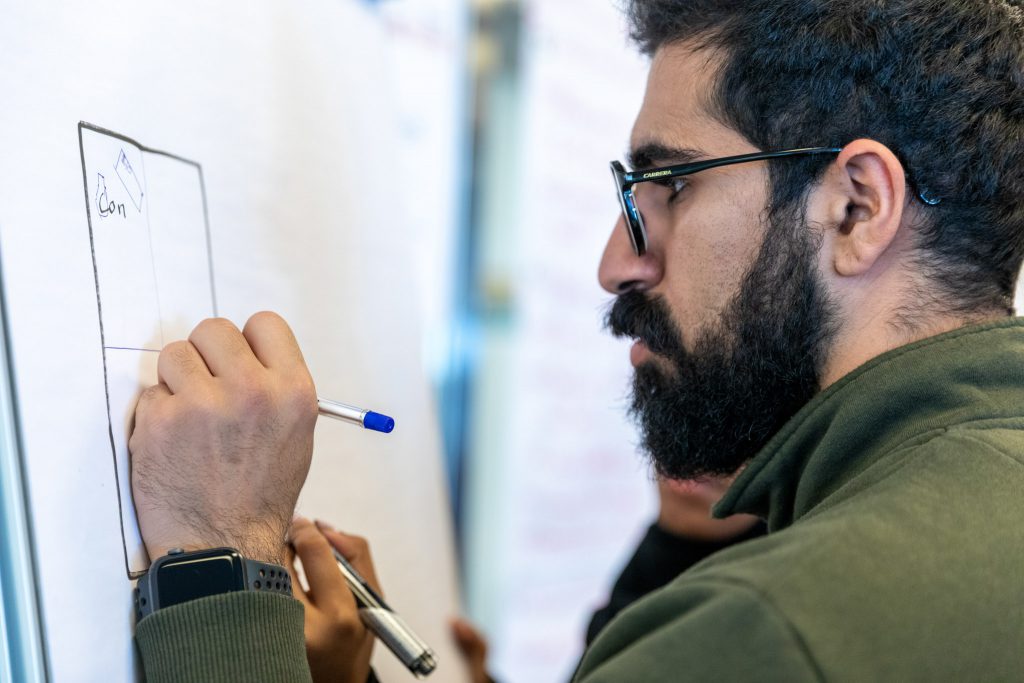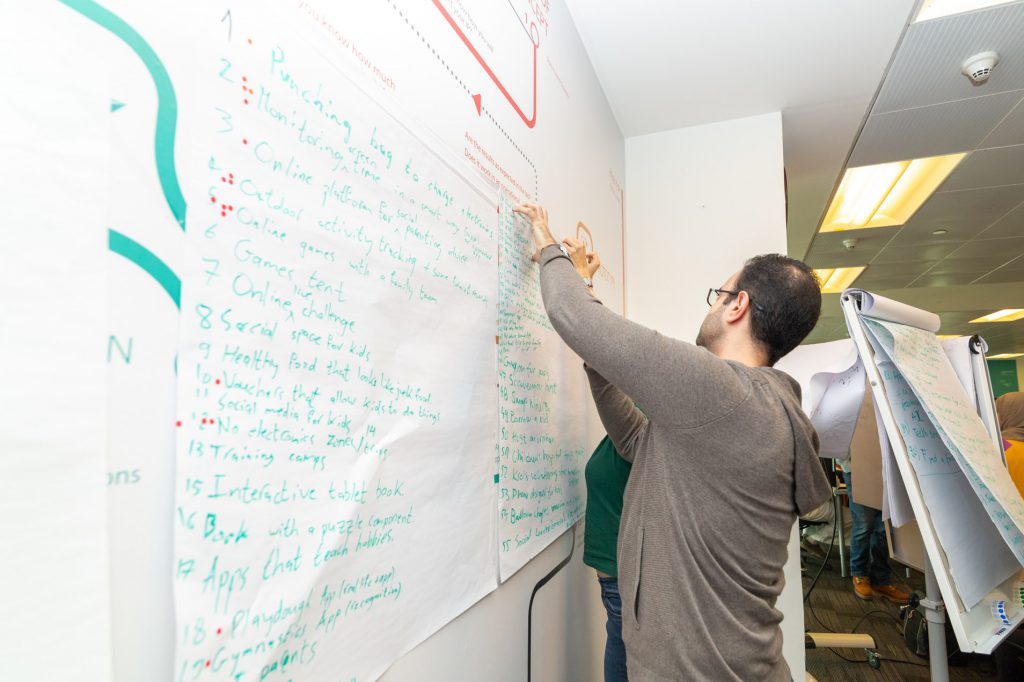When word of a new virus first reached our ears around the turn of the year, few of us could have imagined the unprecedented impact it would have on our lives and livelihoods. Fast forward 6 months and we’ve seen infection levels run into the millions, countries around the world go into lockdown and widespread disruption in almost every industry.
The COVID–19 pandemic is truly a black swan event, having blindsided world leaders, wreaked economic havoc, and almost overnight changed the way we live our lives. But what do black swan events mean for entrepreneurs?
On the one hand, times of economic stress make for a cautious marketplace, meaning venture capital funding is incredibly difficult to come by, and consequently, getting new ideas off the ground can be challenging. But as humanity begins to look for ways to come out of this crisis stronger and with more resilient systems in place, we’re going to need a good deal of innovation and new ideas.
For entrepreneurs, this means opportunity.
Entrepreneurship and Recession
Before we look to the future, it’s worth briefly exploring the past. COVID–19 is the first truly global pandemic humanity has faced in more than a century, which makes accurate analysis of the likely impact on entrepreneurship somewhat challenging. To put it into some context, during the time of the Spanish Flu, the last global pandemic which struck at the end of the First World War, the world did not move at the same pace as we are today.
But while global pandemics are very rare, black swan events are far less so. And by studying them, certain patterns begin to emerge.
Whether we consider the global financial crisis of 2007, the oil crisis of the 1970s, or even the Great Depression in the 1930s, research shows that times of great economic stress invariably provide incredibly fertile ground for novel ideas and new ventures – necessity is, as they say, the mother of all invention.
When faced with a shifted paradigm, humanity has an uncanny ability to quickly reorient and adapt to ‘new normals’, and when it comes to the COVID–19 recovery effort, entrepreneurs are likely to find themselves right at the vanguard.
In the aftermath of the financial crisis in 2007, companies like Uber (founded 2009) and Airbnb (founded 2008) revolutionized the sharing economy by offering financially stressed individuals an easy way to monetize their assets. And the likes of Zendesk (founded 2007) transformed customer services, shifting it to the cloud to allow companies in economic difficulty to scale back their infrastructure, reduce costs, and check one small item off the long list of other things they had to worry about.
Typically, we see a lag between cause and effect here – the financial crisis was caused by, among other things, subprime mortgage lending. But it took some time for this complex house of cards to collapse entirely and the Great Recession to begin.
With COVID–19, we’re currently in the eye of the storm. But while the full economic and humanitarian impact remains to be seen, it’s now that entrepreneurs should be preparing themselves for life in the ‘new normal’.
Designing a Startup for the New Normal
We’ve talked about companies like Zendesk, Airbnb, and Uber, but how should entrepreneurs go about identifying ideas and innovations that will take root in the fertile soil we expect to find in the post COVID–19 world?
The key is to seek out fragilities.
The coronavirus pandemic presented a challenge that many businesses simply weren’t equipped to deal with. Even the most thorough business plan is unlikely to contain contingencies for survival in the event that half the global economy is forcibly shut down for months on end.
This incredibly severe economic stress test has quite understandably revealed cracks in many industries – systemic fragilities that represent opportunities for entrepreneurs.
Take healthcare as an example. This is an industry where operational resilience is absolutely vital, which is why we see backup generators in every major hospital. But the advent of coronavirus led to a global shortage of key equipment including ventilators and protective clothing like gloves and masks. Without these essential components, some hospitals were limited in their ability to effectively fight the virus.
The global pandemic as well accelerated many technologies on their use timeline. Telemedicine was a rising trend over the past few years but the global pandemic moved closer to the new normal. Cura is one of the startups who experienced tremendous growth in the demand for providing virtual medical services.
These are the kinds of fragilities that entrepreneurs can take advantage of by bringing innovative solutions to the table. What those solutions might look like is anyone’s guess, but there’s plenty of scope for promising ideas here – what if hospitals could 3D print their own consumables, allowing them to respond dynamically to unexpected crises or spikes in demand?
Education is another industry that was turned upside as lockdown and social distancing measures rendered traditional teaching methods redundant almost overnight. Right here at KAUST we felt this impact keenly as we were forced to find innovative ways to overcome a challenge nobody would have predicted 6 months ago. We’ve already seen a spike in technology-driven educational solutions, and that trend is likely to continue.
The logistics industry is another area to keep an eye on. Concepts like ‘just in time’ delivery are excellent for efficiency and waste reduction, but global supply chains showed themselves to be a little less resilient than many of us would have assumed in the early weeks of the pandemic. For essentials like food and pharmaceuticals in particular, new logistics innovations may be required.
By seeking out these kinds of fragilities, entrepreneurs can relatively easily tap into demonstrable market needs that are currently going unfilled, allowing them to design innovative startups that add real value in times of need. I am keen to see the emerging new ventures that will be born out of this global pandemic.
Survival of the Agilest – a word on existing startups
For those looking to found their first startup, black swan events provide a wealth of opportunity. But what about existing startups whose businesses may have been rocked by the abrupt change in market conditions?
Perceived wisdom suggests large multinationals are better equipped than young businesses to survive in times of great economic turmoil. But while big corporates are indeed likely to have more assets and larger financial buffers at their disposal, they simply can’t match the agility of a startup.
Whether by pivoting into new products, services, or industries that meet rapidly fluctuating market needs or even simply by scaling back operations to a state of near hibernation while the worst of the economic impact plays out, startups are the ultimate survivors in times like these.
Ultimately, history tells us that the aftermath of the COVID–19 pandemic will see it’s fair share of economic winners and losers. But as an entrepreneur, there’s no reason you shouldn’t be one of the former.
About the Author
 Hattan Ahmed currently leads the Entrepreneurship Center at KAUST, delivering the university’s entrepreneurship vision. He believes in young people as change agents of the future and that universities play a key role in creating national economic impact. In his role as an advocate for entrepreneurship, Hattan works across the entire entrepreneurship ecosystem in the Kingdom, delivering entrepreneurship training, creating corporate innovation programs, and accelerating startups that will contribute to the national transformation agenda.
Hattan Ahmed currently leads the Entrepreneurship Center at KAUST, delivering the university’s entrepreneurship vision. He believes in young people as change agents of the future and that universities play a key role in creating national economic impact. In his role as an advocate for entrepreneurship, Hattan works across the entire entrepreneurship ecosystem in the Kingdom, delivering entrepreneurship training, creating corporate innovation programs, and accelerating startups that will contribute to the national transformation agenda.
Related stories
KAUST Partners with Geeks Valley for Virtual Open Source Ventilator Hackathon
How Saudi Telemedicine App Cura Grew their Business during COVID-19
How 4 KAUST Startups Are Adapting to COVID-19


